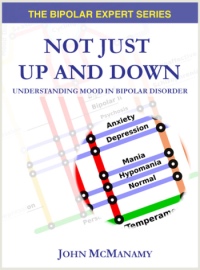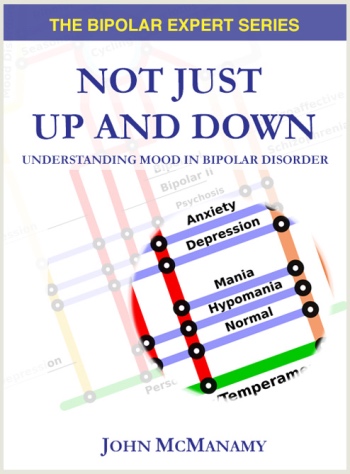Personality Disorders - Categories
 |
Makes sense, but hardly quick and simple.
|
The DSM-5 and personality. In the one thing those charged with the DSM-5 did right, personality disorders will receive a major overhaul. Not coincidentally, this is the one realm of mental illness where big pharma is conspicuously absent.
Quick Intro
The first obvious change is no Axis I/Axis II distinction. Personality disorders will get the same billing as mood disorders and anxiety disorders and all the rest. The next obvious change is a new “dimensional” component to complement the “categorical” classification of personality disorders, something that should have been done with mood disorders and arguably the whole rest of the DSM.
My New Book!

Purchase now.
In its background papers and rationale, the APA and the DSM-5 group note that separating out personality into discrete illnesses has generated no end of clinical confusion. Is someone who abruptly breaks off a friendship, for instance, an “antisocial” with no remorse, a “borderline” who can’t cope, a "histrionic" overdoing it, or a “narcissist” who cares only about him or herself?
Clinicians typically hedge their bets by choosing more than one, or by tacking on the NOS (not otherwise specified) qualifier.
The dimensional view acknowledges the complexity and subtlety of personality. Instead of asking “which one?” at the expense of ignoring whatever else may be going on, a clinician would be asking “how much” and “how severe?” In a sense, psychiatry is bringing back neurosis, but with some important refinements.
Categories
Four of the ten current personality disorders will be axed. The wisdom of the DSM-5 is readily apparent in relieving clinicians of the agony of having to decide between the likes of "schizotypal" and "schizoid" (schizotypal makes the cut, schizoid gets the axe). Similarly, only those prone to histrionic displays are shedding crocodile tears over the demise of "histrionic," which is way too easy to confuse with "narcissism." (Narcissism was originally on the DSM-5's hit list, but a later draft restored the diagnosis.)
In the meantime, sayonara, as well, to "paranoid" and "dependent." And in a Nobel-worthy gesture (medicine or peace, take your pick), the foul and malignant NOS ("personality disorder not otherwise specified") gets the deep-six. Clinicians will actually have to decide between the disorders left standing ("antisocial", "avoidant", "borderline", "obsessive-compulsive", "schizotypal"), plus a catch-all "personality disorder trait-specified". But will they be happy making their choices?
A Modular System for Personality
Personality cannot be easily categorized. Yet, we do need categorical bearings. Dimensionality is far more in sync with clinical reality, yet much more difficult to sort and freeze into comprehensible diagnostic nuggets. The workgroup’s answer to this dilemma was essentially a modular system. (The diagnostic literature refers to “hybrid,” but “modular” - think IKEA - is far more accurate.)
Thus, the DSM-5 retained diagnostic categories such as Borderline and Antisocial, but built them with interchangeable parts. Accordingly, individuals with either illness may have the following hostility “personality trait” in common:
Persistent or frequent angry feelings; anger or irritability in response to minor slights and insults ...
More in a bit ...
Functional Impairments in Personality
In its second draft, the DSM-5 imposes strict order on its six categorical disorders. Thus, whether it's Borderline or Antisocial or the other four we're talking about, we see in common:
Significant impairments in personality functioning, broken down into impairments with self-function (involving issues with identity and/or self-direction) and impairments in interpersonal functioning (involving issues with empathy and/or intimacy).
This is Part A of the diagnosis. In Part B, we are looking at "pathological personality traits" organized into "domains." Let's start with Part A. Below is a table of the Borderline and Antisocial Part A criteria side-by-side:
| Criterion A | Borderline | Antisocial |
| 1. Impairments in self functioning a. | Identity: Markedly impoverished, poorly developed, or unstable self-image, often associated with excessive self-criticism; chronic feelings of emptiness; dissociative states under stress. | Identity: Ego-centrism; self-esteem derived from personal gain, power, or pleasure. |
| 1. Impairments in self functioning b. | Self-direction: Instability in goals, aspirations, values, or career plans. | Self-direction: Goal-setting based on personal gratification; absence of prosocial internal standards associated with failure to conform to lawful or culturally normative ethical behavior. |
| 2. Impairments in interpersonal functioning a. | Empathy: Compromised ability to recognize the feelings and needs of others associated with interpersonal hypersensitivity (i.e., prone to feel slighted or insulted); perceptions of others selectively biased toward negative attributes or vulnerabilities. | Empathy: Lack of concern for feelings, needs, or suffering of others; lack of remorse after hurting or mistreating another. b. |
| 2. Impairments in interpersonal functioning b. | Intimacy: Intense, unstable, and conflicted close relationships, marked by mistrust, neediness, and anxious preoccupation with real or imagined abandonment; close relationships often viewed in extremes of idealization and devaluation and alternating between over involvement and withdrawal. | Intimacy: Incapacity for mutually intimate relationships, as exploitation is a primary means of relating to others, including by deceit and coercion; use of dominance or intimidation to control others. |
OK, clearly someone with borderline is living in a different interior world than someone with antisocial.
Personality Traits
Now let's compare Part B criteria side-by-side (minus the lengthy descriptions):
| Criterion B | Borderline | Antisocial |
| Negative Affectivity | Emotional lability Anxiousness Separation insecurity Depressivity | |
| Disinhibition | Impulsivity Risk taking | Irresponsibility Impulsivity Risk taking |
| Antagonism | Hostility | Manipulativeness Deceitfulness Callousness Hostility |
Note first the interchangeable parts. Borderline and Antisocial share two “domains” in common, Disinhibition and Antagonism. Thus a picture emerges of individuals prone to flying off the handle (often at you, their nearest victim), regardless of their diagnostic label. Criterion C makes it clear that these impairments “are relatively stable across time and consistent across situations.” In other words, we are talking about a clear and sustained pattern of bad behavior, not just a bad hair day.
But also notice the differences. Antagonism comes far more fully loaded in the Antisocial diagnosis. Meanwhile, those with Antisocial come up empty in the Negative Affectivity department. An abusive outburst may look the same, but over time we see different patterns. Moreover, the underlying dynamics are wholly different - one appearing to arise from an inflated ego, the other from an almost lack of ego.
In a sense, Antisocial shares a thing or two in common with Narcissism. Indeed, in the DSM-5’s first version, Narcissism was folded into the Antisocial diagnosis. The DSM-5 keeps its restored Narcissism diagnosis short and sweet, with only one domain (Antagonism) with two personality traits (Grandiosity and Attention-seeking).
Meanwhile, we see Borderline leaning in the direction of Avoidant, with both individuals in effect running scared, sharing the same personality trait of Anxiousness under Negative Affectivity, but with different ways of responding to their respective insecurities.
Thus, even in making categorical distinctions, we see dimensionality at work.
One important point: There are more domains than what you see listed under Borderline and Antisocial. Thus, in addition to Negative Affectivity, Disinhibition, and Antagonism, we also have Psychoticism (a major feature of Schizotypal) and Compulsivity (a major feature of Obsessive-Compulsive).
Wrapping Up Catergories
Don’t worry if you’re confused. At this stage, it is simply enough to know that the DSM-5 is making an attempt to show dimensionality in its categories, namely that:
- Regardless of diagnosis, individuals with personality disorders share in common major difficulties in self-function (relating to self) and in personal function (relating to others).
- Individuals across the various diagnoses tend to share various traits common to other diagnoses, as well.
At the same time, the DSM-5 is also red-flagging key distinctions. These disorders are related, yet separate, kinda, sorta - if you get the drift.
Next: Dimensions ...
Previous: Emphasis on Disorder
Based on a series of blogs, Dec 2010, republished as three articles March 10, 2011, updated July 26, 2011.
 |
More articles on the DSM-5. |




